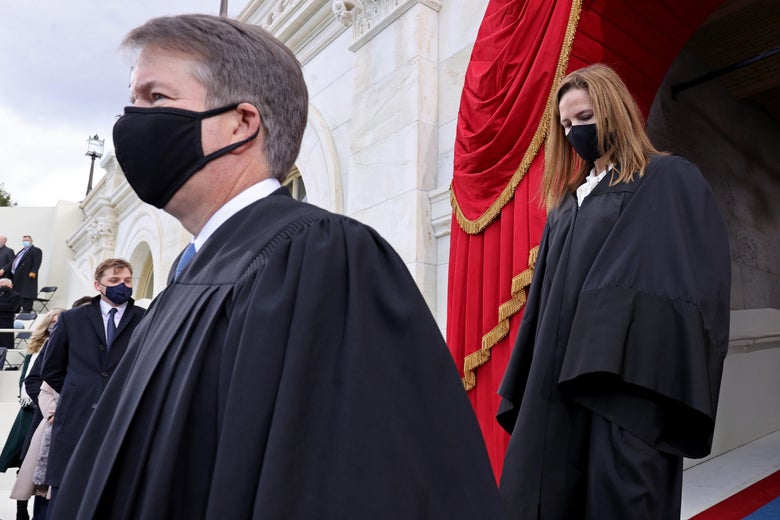
In Shel Silverstein’s classic children’s book The Giving Tree, the majestic tree gives and gives of herself to a demanding little boy, until she is nothing more than a stump for him to sit on. It’s an apt metaphor for how the Supreme Court has allowed abortion opponents to hack away at Roe v. Wade for nearly 50 years. Now, the ultraconservative Supreme Court’s review of a Mississippi abortion ban could provide the final whack.
The whittling away of Roe is not new. It began only a few years after Roe and was particularly pronounced in 1992 in Planned Parenthood v. Casey, a case Kathryn (Kitty) argued at the court. At the time, court watchers believed that Roe would be overturned, but Kitty and her legal team persuaded the Supreme Court that Roe’s core principles must be upheld. The Casey court preserved the vital “viability line” that ensured the right to choose an abortion until fetal viability (usually between 24 and 28 weeks), and thereafter when the pregnancy endangers a woman’s life or health. Yet the Casey court made a key concession to anti-abortion forces: It permitted legislators to construct fences that abortion patients had to climb over to receive care, so long as these obstacles did not constitute an “undue burden.”
In the ensuing years, as the courts grew increasingly conservative, abortion services have been disappearing. For low-income women and disproportionately for women of color, teens, and those living in rural areas, the restrictions have made it almost impossible to obtain abortions and many other essential reproductive health care services.
The Supreme Court’s recent decision to review the constitutionality of Mississippi’s law banning all abortion at 15 weeks, well before viability, places Roe—and Casey—directly on the chopping block. It would be naïve to think the court could pass up this opportunity to prune Roe. In 1992, returning behind the curtain after hearing oral argument in Casey, five justices voted to overturn Roe and allow states to ban abortion. It was only a last-minute vote change by Justice Anthony Kennedy that prevented the court from taking that radical step. Today, six Supreme Court Justices are anti-abortion. Moreover, former President Donald Trump’s appointment of Justice Amy Coney Barrett means that five ultraconservative justices no longer need to adopt a more moderate approach just to persuade Chief Justice John Roberts to join them in overturning existing protections.
If the court permits the Mississippi law to take effect, states will be free to ban all or most abortions, and many of them are likely to do so. We estimate that as many as one-third of the states will immediately or soon thereafter ban abortions.
It is too late to change the makeup of the Supreme Court to avoid the blow the court is likely to deliver. But it’s not too late to preserve, and even grow, reproductive freedom through other pathways. Influencing those in state legislatures and in Congress who will determine the next round of abortion laws is critical. Saving abortion rights from the ax requires those who value reproductive freedom to be politically active in many capacities. Voting in every election—not just the presidential ones—and all the way down ballot, including legislative and judicial candidates, is key. Before Election Day, abortion rights supporters need to visibly campaign for candidates who will champion these rights once elected. The top immediate priority must be to let Congress know that voting reforms are urgently needed to halt right-wing voter suppression and gerrymandered districts, so as to preserve the basic ability to vote anti-abortion politicians out of office.
In coming months we are likely to see red states move to ban all or most abortions, as Texas did last week. If abortion supporters lack the votes to defeat these opportunistic attacks on our rights, let’s be sure to make a big stink. Activists in Argentina and Poland held flamboyant protests this past year that sparked activism across their nations. Loud, creative protests will be important to draw national attention when states brazenly ban abortion in the run-up to the Supreme Court hearing the Mississippi case in the fall and for the foreseeable future.
If you live in a blue state where there is an abortion rights majority, urge your legislators to be stalwarts preserving reproductive freedom, providing a welcome refuge for women forced to travel from hostile climes where rights have fallen. Massachusetts and Virginia are just two of the states that have recently passed omnibus laws providing statutory protections for abortion and repealing restrictions. The availability of safe and legal abortion in a patchwork of states can provide much needed shelter, particularly when combined with funding for travel, child care, and other related expenses. And if you live in a purple state, work to make it blue.
Because nationwide protections are always better, don’t forget Congress and the presidency. A Congress with an abortion rights majority can enact laws protecting abortion rights and providing greater access to health care and supportive services that are necessary for women to have the ability to choose whether or not to carry a pregnancy to term.
We cannot allow vital, long-standing reproductive freedoms to twist and turn on the vagaries of legal decisions or the whims of Supreme Court justices. As the court whacks away at the Giving Tree, we need to be planting new forests to more boldly and broadly advance reproductive freedom as a basic constitutional, and human, right.
U.S. - Latest - Google News
May 26, 2021 at 12:50AM
https://ift.tt/2RKusTM
The Supreme Court is coming for Roe. You'd better be ready. - Slate
U.S. - Latest - Google News
https://ift.tt/2ShjtvN
Shoes Man Tutorial
Pos News Update
Meme Update
Korean Entertainment News
Japan News Update
Bagikan Berita Ini














0 Response to "The Supreme Court is coming for Roe. You'd better be ready. - Slate"
Post a Comment